#The Bad and the Beautiful
Photo

Elaine Stewart
Peter Stackpole, “A Starlet Goes Home to Jersey,” Life, Mar 23, 1953
#elaine stewart#1950s#1950s fashion#50s#life magazine#50s fashion#vintage fashion#old hollywood#peter stackpole#vintage#photography#black and white#photo restoration#the bad and the beautiful
472 notes
·
View notes
Text

Lana Turner, 1952
Via instagram.com/classicfilmgaze
68 notes
·
View notes
Text
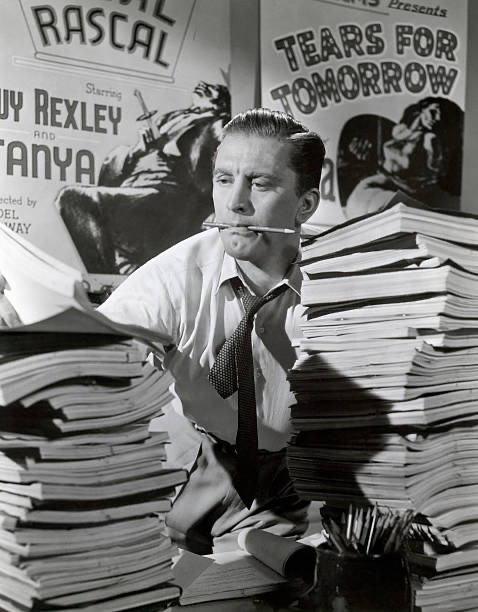
Kirk Douglas in a publicity still for Vincente Minelli’s THE BAD AND THE BEAUTIFUL (1952)
40 notes
·
View notes
Text
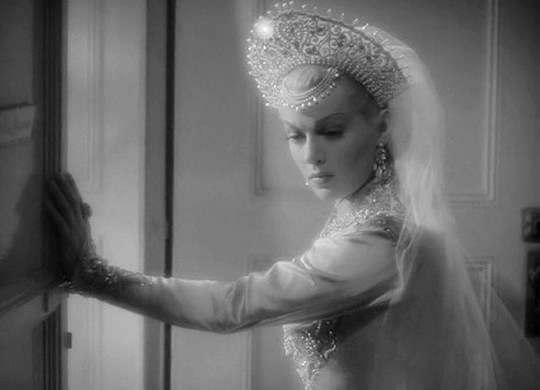
Lana Turner in "The Bad and The Beautiful", 1952 - via x
#lana turner#the bad and the beautiful#vincente minnelli#bw#1950s#50s#1950s film#1950s fashion#1950s dress#1950s actresses#old hollywood#old hollywood glamour#50s hollywood#50s actress#50s fashion#50s movies#vintage#vintage hollywood#bw movie
68 notes
·
View notes
Text
Il bruto e la bella (1952) Vincente Minnelli
@pigscreen
7 notes
·
View notes
Text
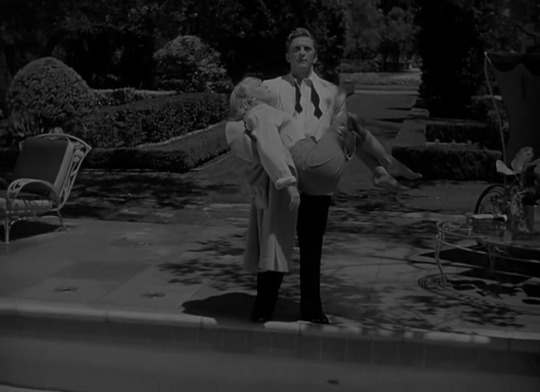


The Bad and the Beautiful (1952) - dir. Vincente Minnelli
3 notes
·
View notes
Text
558 to go
Raise the Red Lantern (1991, dir. Zhang Yimou): It's the way we never see the husband's face. The way the camera never leaves the property after the opening scene. All those simple choices that add up to such a richly layered story, as timeless as it is incredibly specific to its setting and place.
if... (1968, dir. Lindsay Anderson): School shootings had a very different connotation in 1960s Britain.
A Fish Called Wanda (1988, dir. Charles Crichton): I think they should have given that old lady ten dogs to really stretch that subplot out. Then again, any screentime taken away from Jamie Lee Curtis and Kevin Kline would've been a crime.
Pi (1998, dir. Darren Aronofsky): I generally find Aronofsky's movies to be too cold to connect with properly but this was an exception. I don't know if the plot made any sense but who cares with such beautifully done subjective camerawork.
The Pillow Book (1996, dir. Peter Greenaway): I love what this movie was attempting with the visuals but the results were a little bit... infomercial? And at times it fell into self-parody. Still gave it four stars; I have to love such earnestly strange and ambitious filmmaking.
In the Realm of the Senses (1976, dir. Nagisa Ōshima): While watching I couldn't help but think of the take I've seen floating around here that there are no necessary sex scenes in movies. What an incredibly reductive way to view both sex and film. As if an entire facet of the human experience is somehow less worthy of artistic representation than any other. Anyway, this movie is a masterpiece.
Cries and Whispers (1972, dir. Ingmar Bergman): This movie is such a disorienting blend of artificial and viscerally real. You think you know what you're in for with the theatrical monologues, and then you're hit with the death rattles.
The Conformist (1970, dir. Bernardo Bertolucci): The most effective portrayal of the banality of evil I think I've seen in a fictional film. It's about the repression, the cowardice, and the willfully blind complicity.
The Bad and the Beautiful (1952, dir. Vincente Minnelli): This is the kind of classic Hollywood filmmaking I'm normally all about but this movie is so rigidly structured, it can only come across as artificial.
Boyz n the Hood (1991, dir. John Singleton): John Singleton was twenty-four years old when he made this damn near perfect movie?? What am I doing with my life.
#1001 movies#raise the red lantern#if...#a fish called wanda#pi#the pillow book#in the realm of the senses#cries and whispers#the conformist#the bad and the beautiful#boyz n the hood
9 notes
·
View notes
Photo
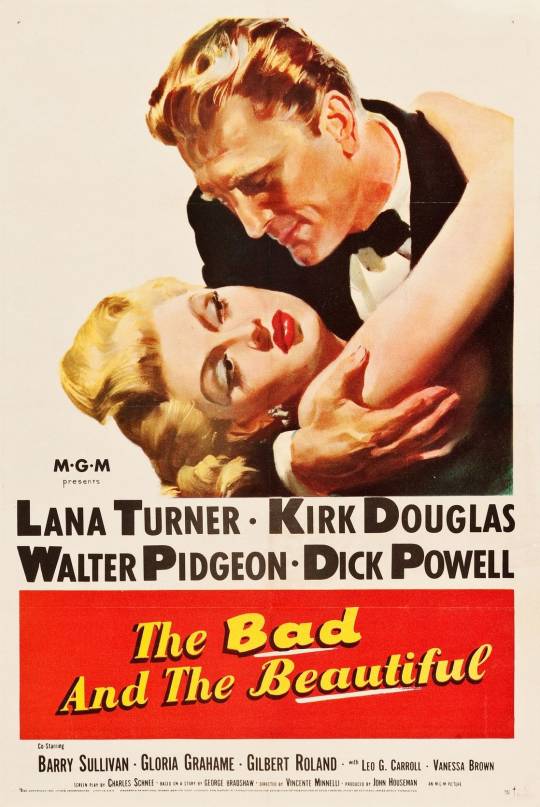
#the bad and the beautiful#kirk douglas#lana turner#walter pidgeon#dick powell#barry sullivan#gloria grahame#gilbert roland#leo g. carroll#vanessa brown#vincente minnelli#1952
7 notes
·
View notes
Text

5 notes
·
View notes
Text
The world exists in such a baffling state of simultaneous sex-aversion and sex-hegemony. Every social platform on the internet is trying to banish sex workers to the shadow realm but I can't post a tweet without at least two bots replying P U S S Y I N B I O. People are self-censoring sex to seggs and $3× but every other ad you see is still filled with half-naked women. Rightwingers want queer people arrested for so much as existing in the same postal code as a child and are also drumming up a moral panic about how teenage boys aren't getting laid enough. I feel like I'm losing my mind.
#it's bad if you want i have sex it's also bad if you DON'T want to have sex#god forbid if you're a woman in a heterosexual marriage and aren't in the mood#that's 'withholding sex' and you're clearly abusive scum who should be divorced and left without any of your shared assets.#but if you DO have sex now you're a degenerate freak plotting for the downfall of western society#i don't know what to say i'm just so tired#politics#culture#queerphobia#lgbtqia#misogyny#<it's not the exclusive source but let's be honest sooo much of this is integral to the patriarchy#patriarchy needs access to an underclass they can treat like sex objects but they also don't want them to have any human rights#so sexuality is both obligatory and stigmatized#purity culture#i'm really struggling with tagging this because most of the appropiate tags would- in a beautiful twist of irony- get me booted off tumblr
27K notes
·
View notes
Text
LISTEN TO ME RN, when the character is supposed to be rlly strong and muscular and buff PUT FAT ON THAT GUY fat is so fucking necessary to have a physical build that is so strong MAKE THEM FATTTTTTTTTTTTT
#rando thoughtz#this is coming from the shrimpiest noodle arm guy in the world. do not give a shit abt if u think fat looks bad suck it up buddy !!!!!!#also ur wrong and fat is so beautiful#and is generally a normal way to exist without needing it to be worthy of existing based on attractiveness#but also the variety in human bodies is beautiful in general too SO FAT IS BEAUTIFL
23K notes
·
View notes
Photo
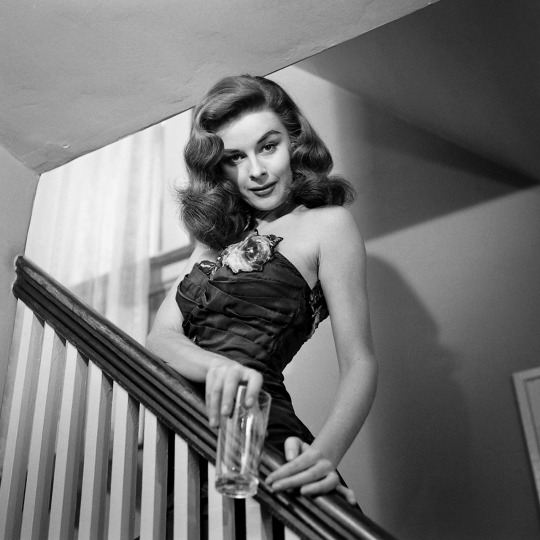
Elaine Stewart
Peter Stackpole, “A Starlet Goes Home to Jersey,” Life, Mar 23, 1953
#elaine stewart#1950s#1950s fashion#50s#life magazine#50s fashion#vintage fashion#vintage#peter stackpole#old hollywood glamour#old hollywood#the bad and the beautiful#photography#black and white#photo restoration
310 notes
·
View notes
Text
Film #915: 'The Bad and the Beautiful', dir. Vincente Minnelli, 1952.
The Bad and the Beautiful is a perfectly fine film. It's so aggressively competent in every way that it doesn't have any of those stand-out features that instantly secure a film its place on the 1,001 list. It's a 1950s melodrama, which classic Hollywood studios loved. It's about morally-grey individuals in the film industry, which classic Hollywood studios really loved. It's told predominantly in flashbacks, which instantly lends the film a persuasive parallel with Citizen Kane (Orson Welles, 1941). None of these things make the film exceptional in itself, though, and as a result it's kind of difficult to tell what made it eligible for canonisation. I think a lot of the affection for this film is due to the combination of a number of major figures at pivotal points of their careers - Vincente Minnelli, Lana Turner, Kirk Douglas, Gloria Grahame - as well as the prurient interest in a film that is clearly based on a number of real figures in the film industry. What makes this film deeper for me is what it doesn't do, as much as what it does.

Three Hollywood icons, writer James Lee Bartlow (Dick Powell), actor Georgia Lorrison (Turner) and director Fred Amiel (Barry Sullivan), are all summoned to a meeting with the famous producer Harry Pebbel (Walter Pidgeon). Pebbel is trying to get them on board for a new project devised by the disgraced producer Jonathan Shields (Douglas), in order to secure funding. While Pebbel waits for a call from Shields, he quizzes the three guests about their history with Shields, aware of their antipathy for the man. Amiel and Shields started to work together producing B-pictures for Pebbel, attempting to make it big in Hollywood. Shields is also driven by the desire to rebuild his family's reputation after the death of his father, also a film producer who died bankrupt. As their success grows, Amiel intends to direct a major feature, but Shields pitches it to Pebbel and allows the project to be helmed by a more established director. Wounded by the betrayal, Amiel never speaks to Shields again; the success of the film, however, allows Shields to start his own production company, which Pebbel then joins.
Meanwhile, Shields has met Lorrison, the daughter of a famous stage actor. Despite what everyone perceives as her lack of talent, Shields casts her as the lead in a dramatic period epic. Her anxieties and her unrequited love for Shields get the better of her, and she disappears shortly before filming, relapsing into alcoholism. Shields decides that the only way to keep her reliable enough for the film's production is to feign love for her. It works, with the film being a success, but on the opening night Lorrison finds Shields at his mansion with another young ingenue. Although her career takes off, Lorrison abandons her contract with Shields' studio.
Some time later, Shields purchases the film rights for Bartlow's debut novel, and requests that Bartlow write the script. In order to focus Bartlow on the writing, Shields arranges for a Lothario actor to entertain Bartlow's wife for a weekend. Returning from a successful weekend's writing, Bartlow and Shields discover that both Gaucho and Rosemary have been killed in a plane crash, en route to Acapulco. Shields keeps his involvement a secret, encouraging Bartlow to focus on the film's production while he takes over the directing. The resulting film is such a disaster from a directorial perspective that Shields shelves the picture, bankrupting his studio. Bartlow offers to return the favour, helping Shields out of his grief, but Shields reveals that he knew Gaucho was going to take a plane trip with Rosemary, and Bartlow storms out.
Despite the appalling way in which Shields has treated them, the three are now at the top of their respective professions, and Pebbel suggests that they owe a favour to Shields. Once Shields calls, the three of them decline and leave; however, they cannot resist listening in on the phone call as Shields explains the film's concept. The final shot shows the eavesdropping trio appearing to realise their mistake.

The story reveals the solidity of the film's structure - emotionally-charged and precisely split into its three parts. There are no real surprises to be had here; the film's chief asset is that it hits its beats perfectly throughout. Many of the more unusual choices made here, especially the flashback structure, had already been formulated and repeated throughout the 1940s to the extent that they were already a bit trite by the time Minnelli made this film. It could be said that this is the greatest strength of the film, though. By refusing to employ any avant-garde effects, or to elevate one of the film's subplots over the others, the focus remains on the emotional impact of the story itself. The film's few forays into the realm of hysteria are aberrations to the otherwise measured tone Minnelli takes. One especially notable example of this is the scene in which a tormented Lorrison, fleeing Shields' mansion after discovering his infidelity, drives through the rain, finally letting go of the wheel and thrashing about as the car (presumably) loses control. Daniel Eagan, in America's Film Legacy, writes that the scene is often referred to as one of Minnelli's most powerful moments of excess, although he feels that it "doesn't make much sense either psychologically or as an example of defensive driving", an indication that this is an unusual example of the film straying into silliness. Eagan sees Lorrison's entire storyline as the weakest of the three, perhaps because Minnelli seems to have invested 'the woman's story' with more overt emotional displays than the other two. Despite the fact that Shields is tangentially responsible for killing Bartlow's wife, Powell plays the scenes stoically, opting to punch rather than cry.
One of the most interesting aspects of the story, and one that distinguishes it from most flashback films, is that the stories feed into each other - Hollywood, after all, is an incestuous place. Lorrison lives next door to Bartlow in Hollywood, and so he thinks of her when writing the script for his film adaptation. Although the three Hollywood idols mostly interact in the framing story, then, they are still present in each others' flashbacks in a way that Shields, who appears only in the flashbacks, is not.
The involvement of Kirk Douglas as the lead is also significant, as Douglas was just beginning his career as a leading man. He was already notorious for playing cynical and ruthless characters, having appeared in Ace in the Hole the previous year, and was nominated for the Best Actor Academy Award for his performance here. While he lost the award to Gary Cooper for High Noon (Fred Zinnemann, 1952), he was displaying the kind of steadiness in performance that made him a major figure in Hollywood for decades. The film's performance at the Academy Awards is interesting overall, actually. The film was nominated for six awards, and won all of them except for Best Actor. Notably, the film was not nominated for either the Best Picture or Best Director awards. The sole acting award it received was Best Supporting Actress for Gloria Grahame as Rosemary, despite Grahame only being on screen for about nine minutes. Overall, then, the performances were uniformly strong, but without anything standing out to draw particular acclaim - despite the short screentime, Rosemary is one of the most memorable characters in the entire picture.
In terms of the sound and the visuals, however, The Bad and the Beautiful is stunning and sumptuous in equal measure. It's not surprising that many of the film's awards were for art direction, cinematography, and costume design. Throughout most of the film, Robert Surtees' camera is unobtrusive, opting for dramatic movement in two places: either as a joke's punchline, when he draws back abruptly to show Shields dropping Lorrison into a swimming pool to sober her up, or when he is mimicking the movement of the camera during the filming of Shields' epic version of Bartlow's debut novel. This versatility was key in Surtees' work on epic films, but also worked well on the smaller scale demanded by Minnelli here. Of course, a film about Hollywood is going to allow for greater opportunities for showy costumes and art direction (and the shots of film production certainly display this), but even the scenes in Lorrison's lowly apartment with its Murphy bed or Bartlow's Virginia house display an obsessive attention to detail.
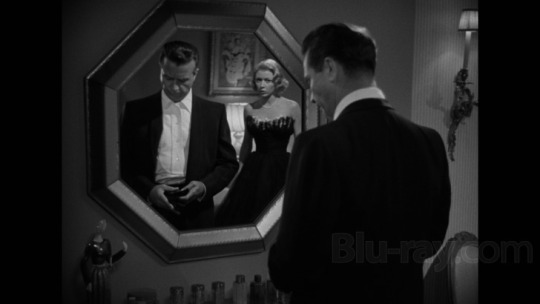
The Bad and the Beautiful is one of those films that is largely forgotten today, like many of the melodramas of the 1950s, but given the talent involved, it's one that should have received more credit. We are so accustomed to thinking of directors and actors today as the drivers of a major film that it is hard to avoid the temptation to rank them as more important than the script or the visual aspects of the production. As a result, when a director such as Vincente Minnelli works to make each aspect of a film as strong as any other, the finished product often lacks any of the hooks that make the film stay in the memory for very long. This is a good film, and one that is well worth a watch. If it were a little less perfect, it might even be one of my favourites. But it doesn't frustrate me enough; it doesn't surprise me enough; I have nothing to say about it except for noting the amorphous 'goodness' that emanates from every surface. I will remember Lana Turner flailing in the rain, but what I should be remembering is the way that the camera corrects for framing and the way the actors hit their marks perfectly, as well as the nuances in their performances. Minnelli fit the production of this film in between two musicals, An American in Paris (1951) and The Band Wagon (1953). Both of these films are remembered far more, not for their technical competence (although both are full of this) but because of their flights of fancy. The Bad and the Beautiful succeeds without this fancy, but without it fades in the memory far more than it deserves.
1 note
·
View note
Text
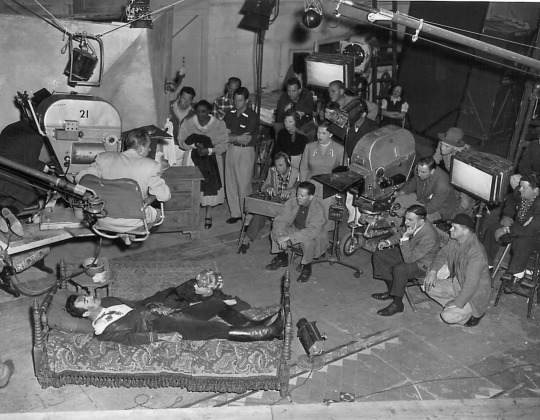
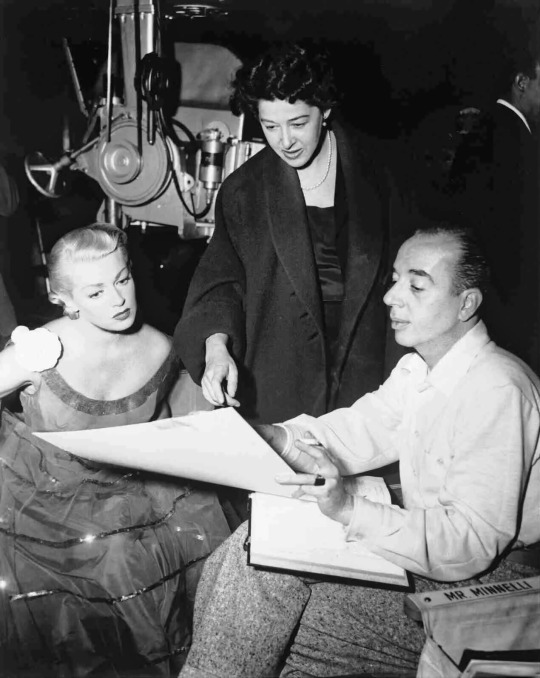

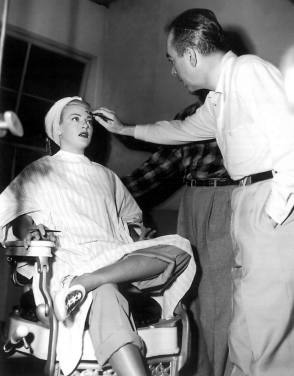
Vincente Minnelli directing THE BAD AND THE BEAUTIFUL (1952)
10 notes
·
View notes
Text
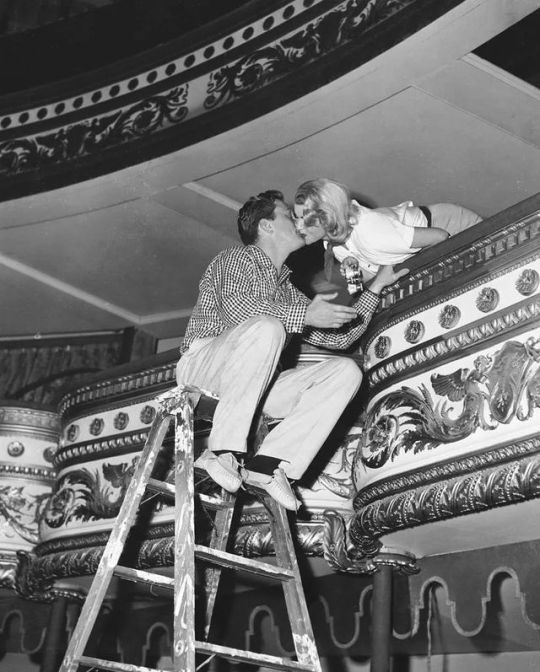
Kirk Douglas and Lana Turner behind the scenes of "The Bad and The Beautiful", 1952 - via x
#kirk douglas#lana turner#the bad and the beautiful#1950s#50s#old hollywood#1950s hollywood#vintage hollywood#classic hollywood#hollywood icons#hollywood golden age#vintage#retro aesthetic#vintage fashion#vintage retro#1950s film#1950s glamour#1950s movies#old movies#50s movies#50s style#50s actress#50s vintage#vintage aesthetic#bw#bw photography#vintage couple#retro fashion
105 notes
·
View notes
Text
Il bruto e la bella (1952) Vincente Minnelli
@pigscreen
2 notes
·
View notes